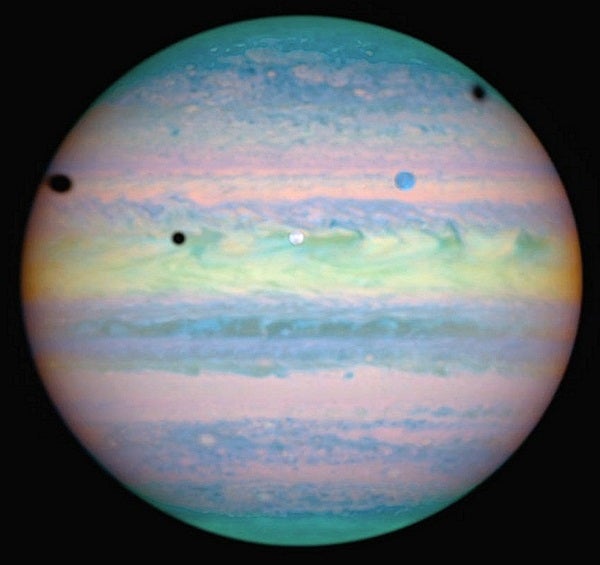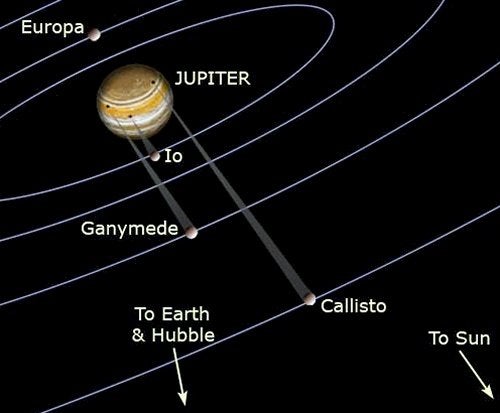NASA’s Hubble Space Telescope (HST) captured an alignment of three of Jupiter’s largest moons: Io, Ganymede, and Callisto. Hubble’s Near Infrared Camera and Multi-Object Spectrometer imaged the group March 28, 2004.
These moons are roughly the same size as Earth’s Moon. In this image, Ganymede’s shadow is at the far left; Io’s shadow is near the center; and Callisto’s shadow is near the right edge. Only two of the satellites are visible in this image — Io is the white dot in the center of the image, and Ganymede is the blue dot at upper right. Callisto is out of the image to the right.
The image was shot in near-infrared light, which gives Jupiter pastel colors. Scientists combined images taken in three near-infrared wavelengths to create this color composite. The HST photo shows sunlight reflected from jovian clouds. In the near infrared, methane gas in the planet’s atmosphere limits the penetration of sunlight, which causes clouds to appear different colors in relation to their altitudes. This is very helpful for scientists studying the jovian atmosphere because the colors indicate the clouds’ positions in the atmosphere. Likewise, infrared sees the water ice on Ganymede in bright blue and Io’s sulfur-coated surface as white.











